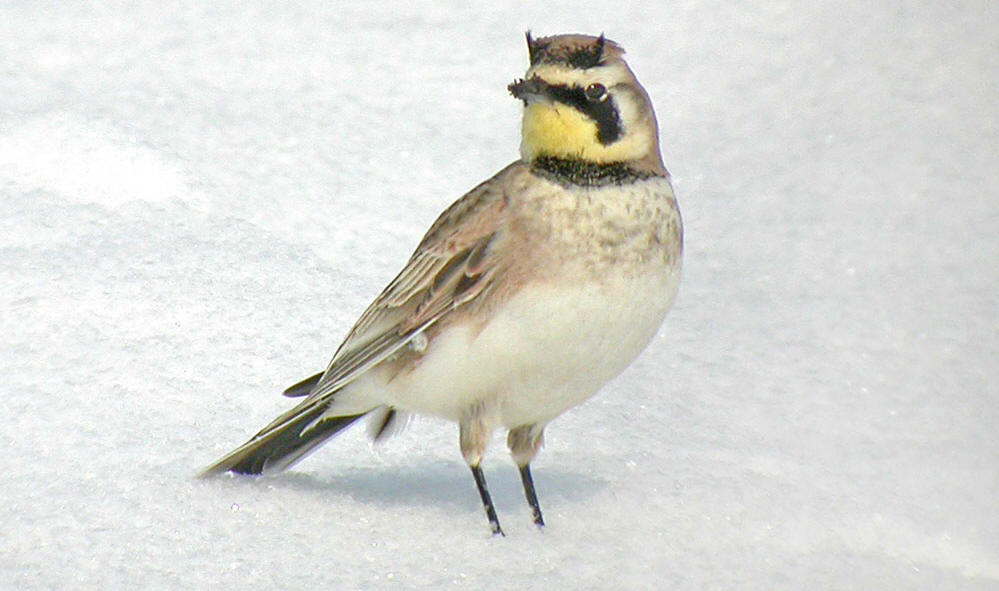|
Horned Lark in Carden
Ron
Pittaway
First
published in Toronto Ornithological Club Newsletter, February 2020,
No 294 |
|
 |
|
Horned Lark by Jean Iron |
|
|
|
One
of the charms of early spring is the Horned Lark’s tinkling song
coming from the ground or from high overhead in the clear blue sky.
The Horned Lark gets its name from the short black feather tufts on
its head. Formerly more common, it is now an uncommon to rare
breeder on the Carden Alvar. |
|
|
|
IDENTIFICATION:
Adults have a yellow throat, black breast band and mask, and usually
inconspicuous "horns" (erectile feathers) which are more distinct on
males. During the breeding season, the tiny black "horns" are
erected in display. The spotted juvenile plumage is quite unlike the
adult and has often tempted birders to think they have found a rare
pipit or longspur. Pipits and longspurs are not found in summer in
southern Ontario. |
|
|
|
VOICE:
The Horned Lark is best detected by its song. It sings its tinkling
song from the ground, boulder or a post and when “skylarking” high
overhead against a clear blue sky. The flight call is a pe-seet.
|
|
|
|
HABITAT:
It prefers sparse short grass fields and heavily grazed pastures
with bare ground where it walks (not hops) and runs on the ground. |
|
|
|
HABITS:
The first migrants arrive in February and are usually seen along
weedy gravel roadsides when the snow covers the fields. Staying
mainly on the ground, they can be difficult to find after the snow
is gone unless heard singing or spotted calling in flight. Probably
because of their early nesting season, Horned Larks are rarely
parasitized by Brown-headed Cowbirds. |
|
|
|
SUBSPECIES:
The subspecies breeding in southern Ontario is the “Prairie” Horned
Lark. See Pittaway (2014) for additional information on other
Ontario subspecies and their identification. |
|
|
|
CONSERVATION:
The “Prairie” Horned Lark was formerly more common in Ontario and is
declining. Habitat losses due to more intensive agriculture and
reforestation are causes, but other causes are not fully known. A
reduction in insect diversity and populations is possibly a
significant factor. Horned Larks and other grassland birds feed
insects to their young because they need protein for rapid growth.
The Horned Lark was more common on the Windmill and Cameron Ranches
in the past when they were heavily grazed by cattle. The ranches are
now part of Carden Alvar Provincial Park with managed lighter
grazing. The tiny population of Horned Larks in Carden might not
exist without some grazing. |
|
|
|
BEST PLACES:
Watch along Wylie Road from just north of the cabin proceeding north
to the viewing blind. Check also from the parking lot at Cameron
Ranch. You may find a Horned Lark. |
|
|
|
ACKNOWLEDGMENTS:
I thank Michel Gosselin for information and proofing and Jean Iron
for the photo. |
|
|
|
REFERENCE:
Pittaway, R. 2014. Subspecies of the Horned Lark.
http://jeaniron.ca/2014/hlark.htm |
|
|
|
|
|
|
|
|
|
|